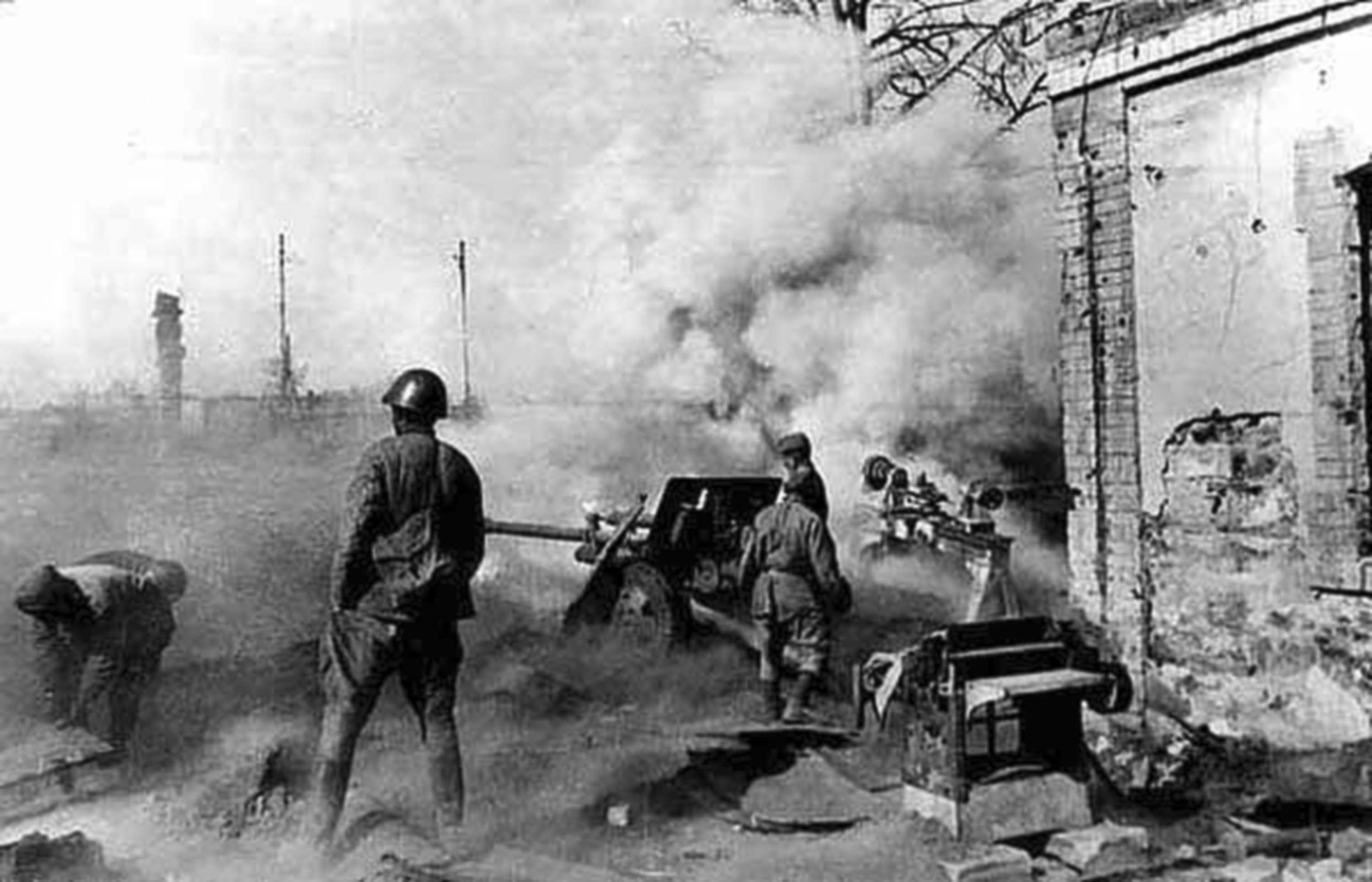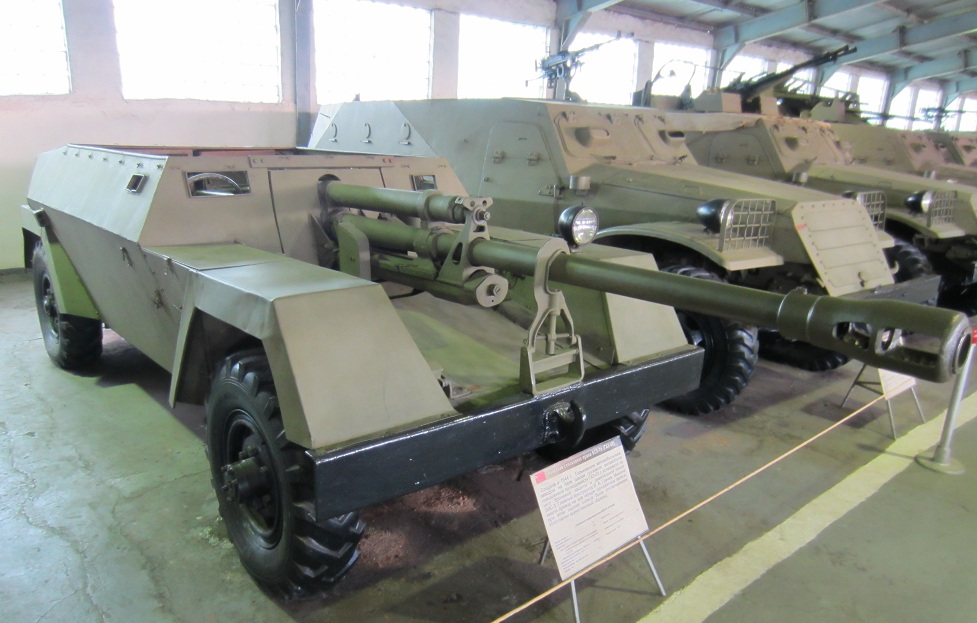| 76 mm Divisional Gun M1942 (ZiS-3) Field Gun | |
| Country of Origin: | USSR |
| Caliber: | 76.200mm |
| Weight: | 1116.000 kg |
| Ammunition Weight: | 6.20 kg |
| Rate of Fire: | 25 shots per minute |
| Range: | 13,290m |
| Muzzle velocitiy: | 680 m/s |
Development
The 76-millimetre Divisional Gun M1942, better known as the “ZiS-3”, was designed by the No. 92 Artillery Factory "Zavod imeni Stalina" under chief engineer V. G. Grabin, who started developing a new design of an anti-tank gun in 1940 without government authorization. The first gun, consisting of the carriage from the 57-mm ZiS-2 and the 76.2-mm barrel of the Divisional Gun M1939, was built in 1941 without informing the state authorities.
When Germany invaded the Soviet Union later in 1941, many of the previously-deployed F-22USV 76.2mm anti-tank guns were destroyed or captured. The Soviet leadership, however, decided not to invest in new anti-tank guns in the first place, because Soviets were influenced by German propaganda, which claimed to have superior heavy tanks and Soviet AT-guns would do them no harm. In fact, Germany didn’t have any heavy tanks in the beginning of 1941 and the Soviet army was desperately in need for at-guns to deal with German medium tanks.
Later on in 1941, Soviet authorities finally realized that German medium tanks could easily be penetrated with the existing 76.2 mm anti-tank guns. When the order for new guns was given, Grabin decided not to deliver the old F-22USV model, but the secretly developed ZiS-3 instead.
Just as the first batch was ready to be delivered, the unauthorized design was discovered, and initially Soviet Army representatives rejected deployment; it was only the demands of war and Grabin's personal guarantee that saw the acceptance of these new guns. The new ZiS-3 field guns soon proved to be better than the pre-war F-22USV 76.2mm gun and, with Joseph Stalin's full support, became the standard divisional field guns after a series of tests in Feb 1942.
The ZiS Under Combat Conditions
While the ZiS-3 proved to be more effective than its predecessor, its main advantage was its easy and cheap manufacturing. It was simple enough that even unskilled workers could join the assembly lines, resulting in huge production numbers, which led to a total of 103,000 ZiS-3 at-guns by the end of the European war.
“This gun is a masterpiece of artillery systems design“
― Joseph Stalin, observing the tests of the ZiS-3
― Joseph Stalin, observing the tests of the ZiS-3
The ZiS-3 was appreciated by the Soviet army because of its reliable and easy to use design.
Using the light carriage of the ZiS-2, the ZiS-3 was overall lighter and easier to adjust.
German light and medium tanks could be knocked out at any time, thanks to AP shells.
When German heavies rolled out though, the ZiS gun was struggling to penetrate when facing the front armor of Tigers and Panthers.
A trained crew, usually consisting of 7 members, was able to shoot about 25 rounds per minute within a maximum range of 13km. Captured ZiS-3 guns were nicknamed “Ratsch-Bum” by the Germans because of the distinctive sound the gun makes when it fires. Some were mounted on “Marder” tank destroyers. Often used as an anti-tank weapon, the ZiS-3 was also used as a front-line artillery piece to provide support for attacking troops.
Variants
KSP - 76
An attempt to mount the ZiS-3 on top of a light vehicle was the prototype KSP-76.
The wheeled light vehicle, which was developed in 1943, was unable to successfully fire multiple rounds though, and so did not pass the prototype tests.
SU - 76
In 1942, Soviet leadership demanded a StuG-like Soviet tank, when seeing the success of German StuG’s in 1941. Plans were then made to combine a modified T-70 chassis with the successful ZiS-3 gun. As a result, the SU-76 was the second highest built tank manufactured by the Soviet Union, with a total number of 12.671 units. When facing German heavy tanks though, the thin armor and the 76.2 mm rounds did not pay off and the SU-76 became more of a front-line artillery support weapon.
After the War
Although the 76-millimeter Divisional Gun M1942 (ZiS-3) weapons were officially replaced by D-44 guns in the Soviet forces shortly after WW2, some of them remained in service in other parts of the world which have been allied to the Soviet Union. Especially in 3rd World countries ZiS-3 guns can still be seen in action. Others are exhibited in museums or as decorations or simply memorials of WW2.
I hope you enjoyed the fifth TToH-episode. Please give us some Feedback in the comments. Also be sure to vote for the unit you want to see in the next Episode of "The Theatre of History" here.




















 cblanco ★
cblanco ★  보드카 중대
보드카 중대  VonManteuffel
VonManteuffel  Heartless Jäger
Heartless Jäger 